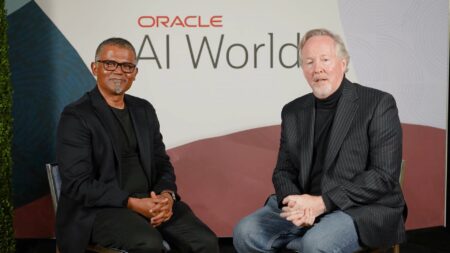Welcome to Prove It – a round table approach to the Acceleration Economy in which our Analyst Network discusses, debates, and defines pressing topics. Senior Analysts, Aaron Back hosts this episode focusing on customer data. Analysts Scott Vaughan, John Foley, and John Muehling weigh in sharing their experience and expertise on the subject.
Highlights
00:09 – Aaron introduces this episode’s topic: Customer Data.
Meet the Analysts
01:02 – Scott Vaughn is a Chief Marketing Officer Analyst. He looks at things from a strategy perspective, considering how to use customer and market data.
01:28 – John Foley is a Data Analyst as well as the Found and Editor of the Cloud Database Report. With over 20 years of experience, he focuses on data management, including customer data management.
02:11 – John Muehling is a Customer Data Analyst. Over the past 25 years, John has had experiences ranging from sales to marketing to systems. He looks at data from the practitioner’s perspective, such as those executing campaigns for sales or marketing.
The Strategy Behind Customer Data
03:17 – In a strategic sense, why is customer data one of the most powerful data sets for a company? John Foley discusses how many business diagrams focus on the customer at the center. He further elaborates on how customer data plays a key role because of this.
05:32 – John Muehling brings up the absence of strategy. In addition, he contemplates what goes into a clear, well-defined enterprise data strategy and how it affects businesses.
07:55 – There are a couple of key components that businesses need for a data strategy. Firstly, you need a catalyst – disruptions promote change. Secondly, you need to hire the right talent and empower the right executives with the right rewards to advance the data strategy.
Customer Data & Cloud Technology
09:09 – Scott challenges whether technology is in place to be able to make these advances. In response, John Foley discusses the generational advancement of cloud technology and its role in data management. For instance, he presents three examples of the relationship between customer data and cloud technology: data integration, data warehousing, and data sharing.
13:19 – There has been a drastic change in how we look at data. For example, take into consideration strategies from on-premises data and how it has been handled previously compared to how we handle customer data now in the cloud.
14:47 – How have industry clouds influenced how we look at data? Scott debates whether it will be challenging or helpful to have industry-specific strategies for processing data parameters.
Who Should Lead Customer Data Strategy?
15:47 – Who should be leading customer data strategy? John Meuhling suggests that an executive-level or C-level position should be taking the lead on data strategy because it affects every level of the business.
19:09 – It has to be a continuous operation of transparency and governance capabilities with the integrations. There needs to be ownership over the strategy. Also, it needs to be part of the C-level and board-level agenda.
20:50 – There is a range of skills and different ways of thinking required to lead the data strategy.
21:25 – John Foley references a recent podcast discussion about data sourcing. The company he spoke with shared that on average, companies have over 1,000 sources feeding into their cloud data warehouses.
22:20 – Who leads customer data strategy can be dependent on the business. The culture of the company can even be a contributing factor. There are several roles involved with managing customer relationships and customer data strategy. However, it’s essential that companies have C-level involvement.
24:34 – Because of customer and prospect acquisitions, costs and risks are getting higher. So, if you don’t design the strategy right, you will encounter more problems.
The Value of Trust in Data
26:02 – Trusting the data internally speaks outwardly, as customers trust you with how you handle their data.
27:29 – With the rise of citizen data scientists, customers are more understanding of data tracking. Because of this, it’s critical for companies to provide a secure and protected environment for customer data.
29:19 – Companies need to leave behind the 360-degree view of the customer. Now, they need to think of it as a trusted view of the customer. If they don’t trust what you’re doing with their data, there’s going to be more regulation around the use of customer data.
31:43 – Companies need to flip the model and open up enough to where customers want to share data. In addition, show the other executives and the stakeholders the before and after versions of the model.
32:43 – There’s a changing nature of openness with control, transparency, and trust. The 360-degree view, nowadays, needs to share outward and inward insights as far as what the customer is doing and what they’re engaging with intentionally.
Setting Expectations
34:56 – What are some elements to consider for the expected outcomes? Furthermore, with automation and AI playing a major role with data, how should we set expectations with customer data around these factors?
35:42 – Getting a core set of data is important for the company – it enables better service and builds a trusting relationship with the customer.
36:48 – Rather than looking at what value the customer has to the business, consider what value the business has to the customer.
37:44 – Define the core dataset so you can focus on that instead of focusing on building out the greatest dataset or database.
38:50 – How do businesses continue to measure trust in a customer and build retention?






